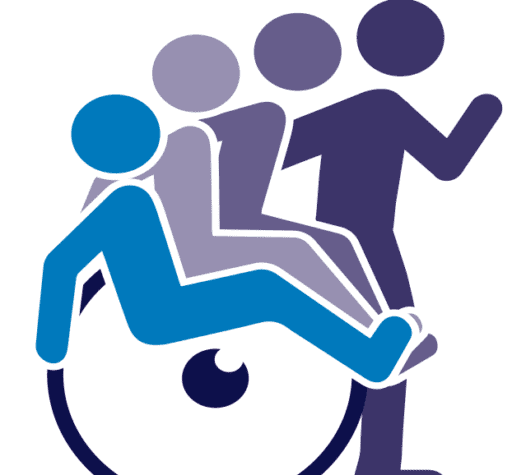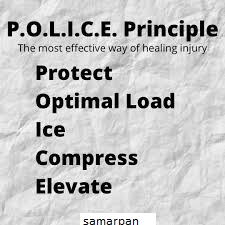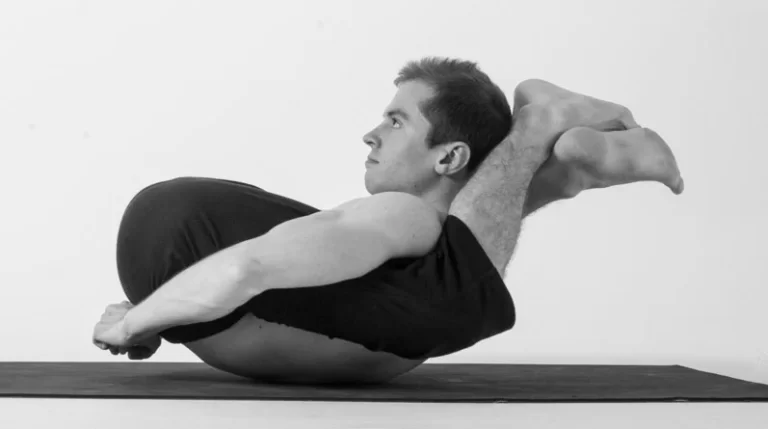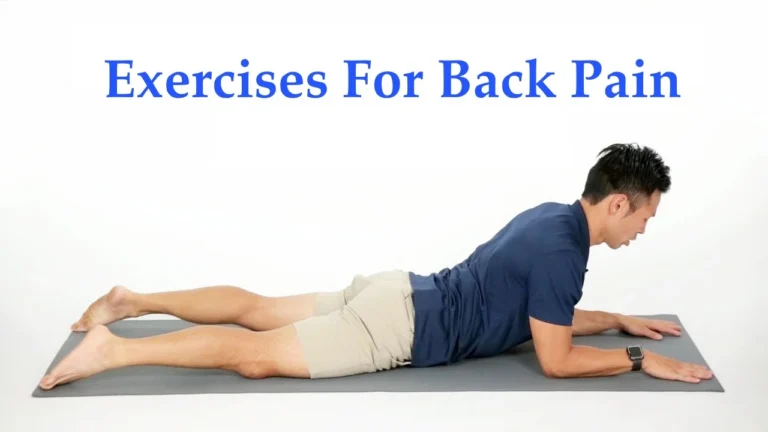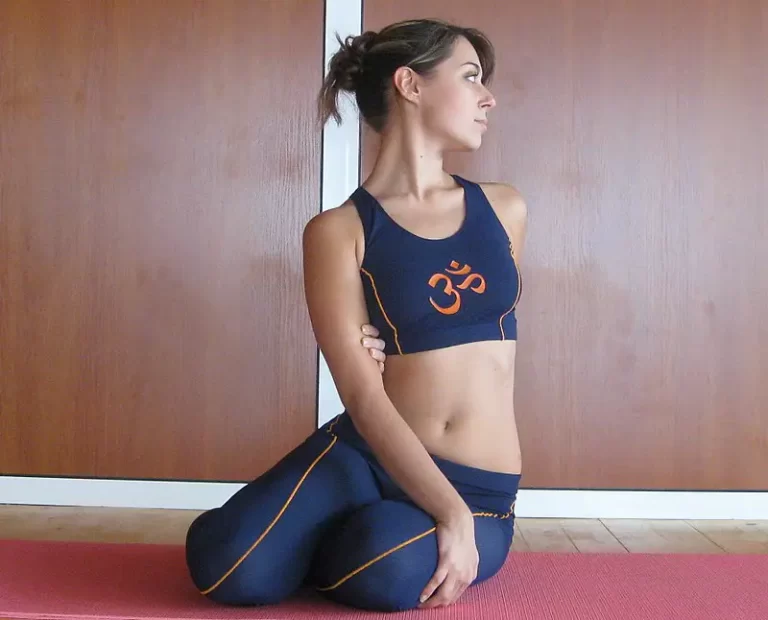23 Best Spine Strengthening Exercises For Osteoporosis
Table of Contents
Introduction:
A disorder called osteoporosis weakens bones, increasing their susceptibility to fracture. Because the spine is so delicate, vertebral fractures can cause long-term pain, bad posture, and decreased mobility. For those with osteoporosis, spine strengthening exercises are crucial because they build bone density, improve posture, and improve balance.
By strengthening the muscles that support the spine, these workouts lower the chance of fractures and falls. Exercises that target the spine can be quite effective in controlling osteoporosis and preserving general spinal health if done correctly and consistently.
Spine Strengthening Exercises For Osteoporosis:
Bird Dog:
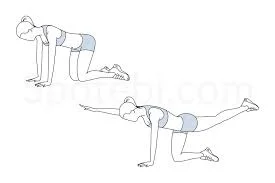
The Bird Dog exercise is very helpful for those with osteoporosis because it improves the muscles in the lower back, abdomen, and spine while stabilizing the core. Start on your hands and knees in a tabletop posture, maintaining a neutral spine, to complete it. Hold for a while, then flip sides and go back to the beginning position. This low-impact, regulated exercise can lower the incidence of spinal fractures by supporting good posture, improving coordination, and strengthening the spine.
Cat-Cow Stretch:
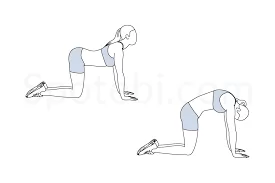
The Cat-Cow Stretch is a soft, flowing exercise that helps people with osteoporosis by increasing spine flexibility and reducing neck and back strain. Then, as you curve your spine and tuck your tailbone and chin under (Cat Pose), release your breath. Breathe in time with each movement as you move deliberately and gently. This stretch helps maintain a healthy range of motion without straining the bones, improves posture, and increases spine mobility.

Targeting the lower back, glutes, and spinal extensors, important muscles for maintaining the spine in those with osteoporosis, the Superman Exercise is a back-strengthening exercise. Hold the pose for a few seconds. Then gently descend again. Without putting undue strain on the spine, this exercise serves to strengthen muscles, improve posture, and lessen spinal strain.
Standing Back Extension:
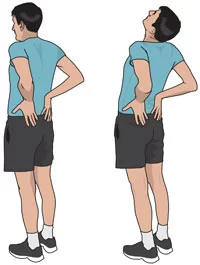
Standing Back Extension is a quick and easy exercise that helps people with osteoporosis strengthen their lower back muscles and straighten their spine. Keep your movements slow and deliberate as you slowly arch your upper body backward while gazing slightly upward. Return to the upright posture after holding for a few seconds. This movement lowers the incidence of vertebral compression fractures by increasing spinal mobility, counteracting the effects of slouching, and preserving the spine’s natural curvature.
Resistance Band Rows:

Band of Resistance Rows are an effective way to develop the postural, shoulder, and upper back muscles, which are crucial for maintaining the spine and are particularly crucial for those with osteoporosis. A resistance band should be firmly fixed in front of you at chest height as you sit or stand to complete this workout.
With both hands and arms outstretched, grasp the band’s ends. Bend your elbows and squeeze your shoulder blades together to pull the band toward your body. Then, slowly go back to the beginning position. In addition to stabilizing the spine and improving posture, this regulated rowing action lowers the risk of spinal fractures and upper back rounding.
Shoulder Blade Squeeze:
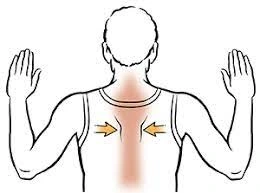
The Shoulder Blade Squeeze is a mild yet efficient exercise that works the rhomboids and trapezius, two muscles in the upper back that are crucial for maintaining proper posture and spinal alignment in people with osteoporosis.
As though you were attempting to squeeze a pencil between your shoulder blades, slowly pull them back and together. Repeat several times. This action lowers the likelihood of postural abnormalities such as kyphosis, promotes spinal stability, and counteracts forward shoulder position.
Seated Row with Resistance Band:

A spine-strengthening exercise, the Seated Row with Resistance Band works the rhomboids, trapezius, and latissimus dorsi, which are important for maintaining good posture in people with osteoporosis. This workout involves sitting on the floor with your legs straight out in front of you and wrapping a resistance band over your foot soles.
With both hands, grasp the band’s ends while maintaining a straight back and relaxed shoulders. Bend your elbows and squeeze your shoulder blades together to pull the band toward your body. Then, slowly go back to the beginning position. This deliberate movement lowers the risk of posture-related spinal fractures, strengthens the back, and enhances spinal support.
Chest Opener Stretch:
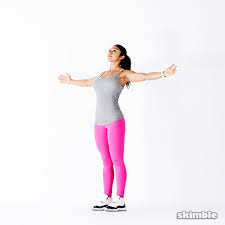
The Chest Opener Stretch is a mild flexibility exercise that helps loosen up the chest muscles, which can get stiff in people with osteoporosis, and counterbalance forward shoulder posture. By harmonizing the front and back muscles, lowering upper back tension, and promoting a more upright spinal alignment, this stretch promotes improved posture.
Pelvic Tilt:
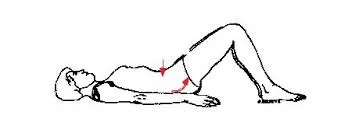
A mild exercise for strengthening the abdomen and lower back muscles, the Pelvic Tilt helps to stabilize the spine and enhance posture, which is particularly advantageous for those with osteoporosis. After a few seconds of holding the posture, release the tension and go back to the neutral spine position. Spinal alignment is improved, lower back pain is lessened, and core stability is increased with this tiny yet deliberate action.
Wall Plank:
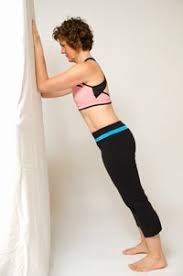
The Wall Plank is a simple core exercise that is perfect for those with osteoporosis since it helps strengthen the back, shoulders, and abdominals without putting undue strain on the spine. To do it, face a wall and position your hands or forearms shoulder-height on the wall.
Maintaining a neutral spine and an engaged core, walk your feet back a little so that your body forms a straight line from head to heels. As your strength increases, progressively extend the time you hold this posture for 20 to 30 seconds. This safe and efficient isometric exercise improves spine stability, postural control, and general core endurance.
Chin Tucks:
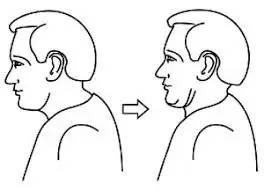
To prevent forward head posture, people with osteoporosis can perform chin tucks, a simple yet effective exercise that strengthens the neck muscles and encourages normal head and spine alignment. Do this many times. This little motion promotes an upright posture, eases neck tension, and helps align the cervical spine, all of which lessen the pressure on the upper back and spine.
Side-Lying Leg Raises:
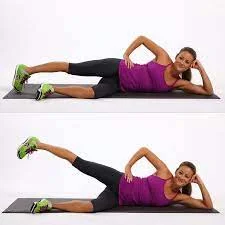
Lying on the Side, Leg Raises are a low-impact exercise that works the hip abductors and gluteal muscles, which are important for supporting the spine and stabilizing the pelvis. They are especially helpful for those who have osteoporosis.
Lying on your side with your legs stacked and straight is how you do this workout. Without turning your hips, slowly raise your upper leg and then carefully bring it back down. After a few repetitions, switch sides. By strengthening the muscles surrounding the hips and lower back, this exercise enhances posture, balance, and spinal alignment.
Cobra Stretch:
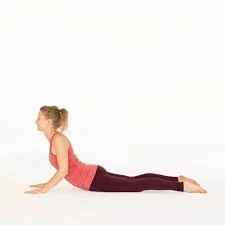
The Cobra Stretch is a mild back extension exercise that is especially beneficial for those with osteoporosis since it opens up the chest, strengthens the spine, and improves posture. With your elbows at your sides and your hands beneath your shoulders, execute this stretch while lying face down on the floor.
Maintaining your hips and legs relaxed on the floor, slowly press through your hands to raise your chest off the ground. Avoid tension by merely raising as far as is comfortable. This motion eases lower back stress, counteracts forward bending, and increases spinal mobility.
Knee-to-Chest Stretch:
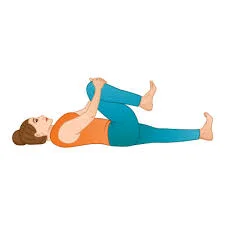
A mild flexibility exercise that helps relieve hip and lower back strain, the Knee-to-Chest Stretch enhances spinal comfort and mobility, which is particularly advantageous for those with osteoporosis.
Keeping the other foot stable, slowly raise one knee toward your chest by softly pulling it in with your hands. This exercise promotes a more flexible, aligned spine and helps release tightness in the lower back.
Heel Slides:
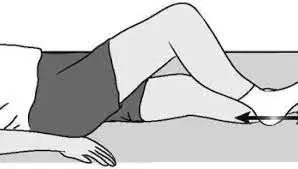
Ideal for those with osteoporosis, heel slides are a mild, low-impact exercise that helps preserve hip and lower back mobility while enhancing core control and pelvic stability. To straighten the leg, slowly move one heel away from your body while maintaining a solid pelvis and active core. In a safe, spine-friendly way, this regulated motion improves flexibility, promotes spinal alignment, and develops the hip and abdominal muscles.
Hip extension:

A strengthening exercise called hip extension works the gluteal and lower back muscles, which are crucial for supporting the spine and preserving pelvic alignment, which is particularly crucial for those with osteoporosis. Hold onto a wall for balance or stand behind a solid chair to do this workout.
Maintaining your upper body erect, slowly raise one leg straight back without bending the knee or arching the lower back. After a brief period of holding, switch to the other leg and repeat. This exercise improves posture, lessens lower back pain, and increases hip stability.
Step-ups:
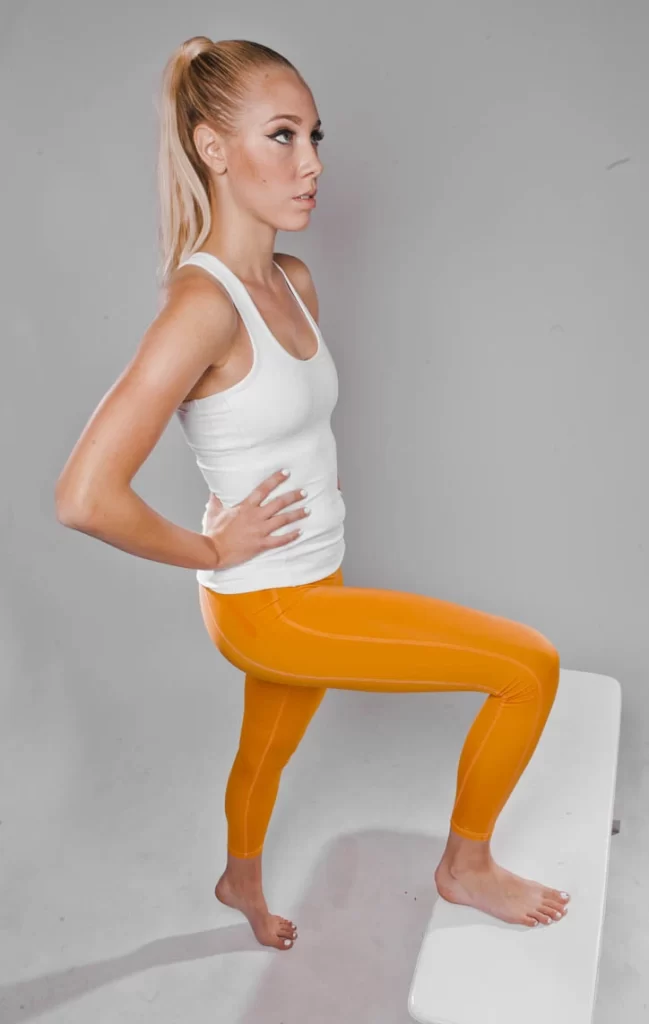
Step-ups are a practical, weight-bearing exercise that improves balance and coordination while strengthening the legs, hips, and core, all of which are vital for people with osteoporosis. Position yourself facing a low, stable step or platform to do this exercise. Then, raise the other foot to meet it. By increasing stability and functional mobility, this regulated movement lowers the risk of falls, promotes spinal alignment, and strengthens the lower body.
Sit-to-stand:
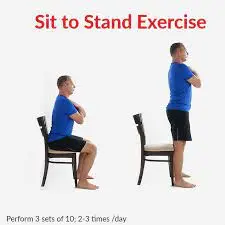
Sit-to-stand is a useful and efficient workout that strengthens the legs, hips, and core while simulating everyday motions. People with osteoporosis will particularly benefit from this exercise. For this exercise, place your feet shoulder-width apart and flat on the floor while sitting straight on a supportive chair.
Lean slightly forward and push through your heels to stand up completely without using your hands. Repeat several times. In addition to improving balance and posture, this exercise strengthens the lower body and supports the spine during daily tasks.
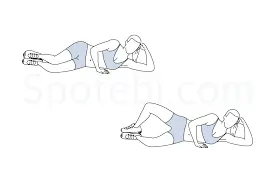
Clamshells are a low-impact, side-lying exercise that works the hip stabilizers and gluteus medius, which are important muscles for spinal stability and pelvic alignment, particularly in those with osteoporosis. With your feet together, slowly raise your upper knee as high as you can without turning your hips, then carefully bring it back down. After a few repetitions, switch sides. Clamshells encourage good posture and spinal stability while strengthening the hips and improving balance.
Tai Chi:
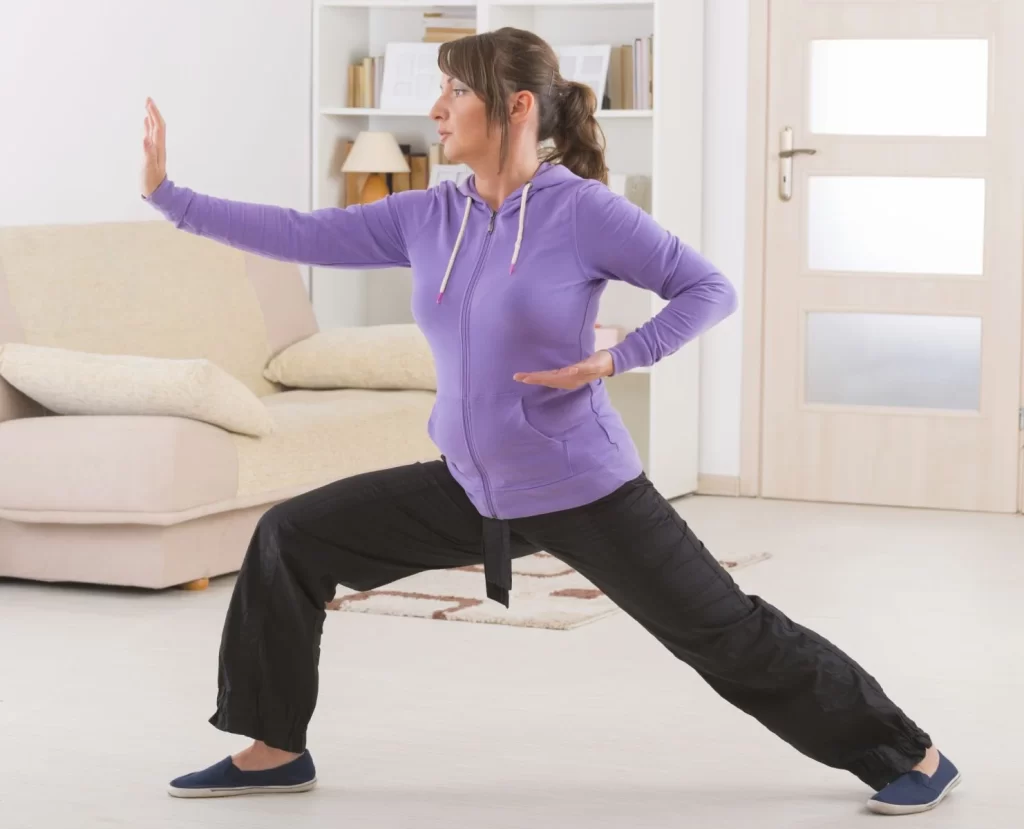
Practicing Tai Chi frequently helps improve balance, coordination, flexibility, and muscular strength—all crucial for preserving spinal health and minimizing the risk of falls and fractures. Tai Chi’s low-impact style improves posture and body awareness while reducing strain on the bones and joints. It is a comprehensive strategy for controlling osteoporosis because of its meditative qualities, which also lower stress and improve general well-being.
Yoga poses:
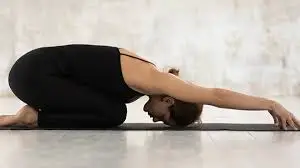
By enhancing flexibility, balance, posture, and muscular strength, yoga postures can significantly help people with osteoporosis when they are chosen properly and executed with the right alignment. Without putting undue strain on the bones, gentle positions like Child’s Pose, Bridge Pose, Cat-Cow, Mountain Pose, and Tree Pose help strengthen and lengthen the spine and surrounding muscles. Regular yoga practice under supervision can also help with stress management and general well-being, which makes it an important part of managing osteoporosis.
Squats:
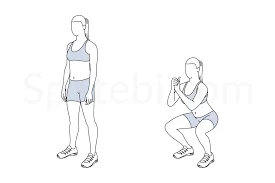
The muscles of the thighs, hips, glutes, and core are strengthened by squats, a very powerful weight-bearing exercise that is essential for maintaining balance and supporting the spine in people with osteoporosis.
A simple squat involves standing with your feet shoulder-width apart, maintaining a straight back, and lowering your hips gradually, as though you were sitting in a chair, while keeping your knees behind your toes. Then, to stand again, push through your heels. When done correctly, squats improve lower body strength, increase bone density, and minimize the risk of falls by enhancing posture and stability.
Walking:
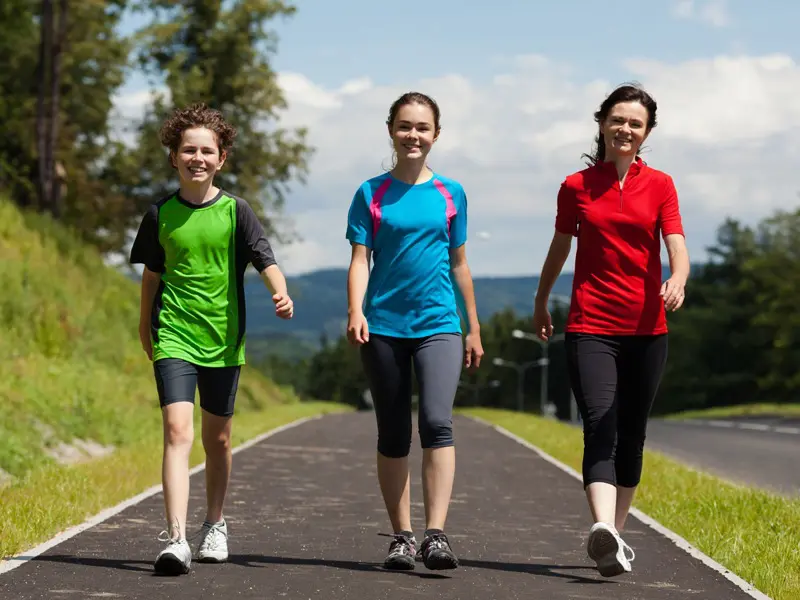
Walking is an easy, low-impact, weight-bearing activity that is perfect for people with osteoporosis since it helps preserve bone density, improve cardiovascular health, and increase general mobility. Frequent walking enhances balance and coordination, lowers the incidence of falls and fractures, and strengthens the muscles supporting the hips and spine.
Additionally, it encourages improved posture and increases joint flexibility without putting undue strain on the bones. Walking every day, whether indoors or out, may be a convenient and efficient strategy to promote bone health and general well-being.
Conclusion:
Exercises that strengthen the spine are crucial for controlling osteoporosis and preserving a functioning, healthy lifestyle. By strengthening the muscles that support the spine, these exercises help improve posture, increase core stability, and lower the risk of spinal fractures.
They provide improved flexibility, balance, and general bone health when done regularly and carefully. For people with osteoporosis, including these specific motions into a routine under the right supervision can greatly enhance quality of life and support long-term spine stability.
FAQs
As a potassium-rich food, bananas may improve bone health by preserving calcium, which is essential for healthy bones. Bone health is also supported by other nutrients included in bananas, such as vitamin C and magnesium, which are important for collagen formation and bone mineralization, respectively.
Yogurt with almonds, milk-based fortified cereals, and eggs with cheese and spinach are all good breakfast choices that are high in calcium. Before beginning calcium supplements, see your doctor since some osteoporosis drugs, such as bisphosphonates, may interact with them.
Although osteoporosis cannot be prevented, it can be slowed down, existing bone can be strengthened, and fracture risk can be decreased. This includes a mix of possible medicine and lifestyle modifications, such as dietary, physical activity, and good habits.
There is no age at which a patient must discontinue taking osteoporosis medicine; however, some may do so after a lengthy course of therapy if they encounter adverse effects or seek end-of-life care.
Osteoblasts, the cells that make new bone, are accelerated by romosozumab, while osteoclasts, the cells that tear down bone, are slowed down. This aids in halting bone loss.
Regular weight-bearing and resistance training activities combined with a diet high in calcium and vitamin D are usually the quickest approach to build bone density. Additionally, reducing alcohol intake and abstaining from smoking can also improve bone health.
Walking is a relatively easy kind of exercise that helps the spine in five different ways for the majority of individuals. The muscles in your feet, legs, hips, and torso that support your spine get stronger with each step. Walking’s aerobic benefits support spinal structures.
The four phases of osteoporosis are as follows. A bone scan can be used to identify the first two, even if they don’t cause any symptoms. Symptoms of the latter two phases may include pain, bone abnormalities, and vulnerability to fractures.
Focus on eating meals high in calcium, vitamin D, and other vital minerals to build stronger bones. Add dairy products (milk, yogurt, and cheese), leafy green vegetables, fatty fish (salmon, sardines), nuts, and seeds, as well as fortified meals (such as some cereals and plant-based milks).
Practice low-impact, gentle yoga styles like restorative, yin, or hatha. Avoid demanding forms like power yoga, vinyasa, or ashtanga. Doing a little yoga every day is preferable to doing a couple of larger sessions per week.
Fruits high in potassium, calcium, magnesium, and vitamin C are very good for bones. Oranges, bananas, berries, and figs are a few examples. These nutrients support bone density, collagen synthesis, and general skeletal strength.
Maintain a healthy weight, regularly perform weight-bearing and resistance workouts, and concentrate on eating a balanced diet high in calcium and vitamin D to naturally strengthen bones and joints. Additionally, think about including foods high in zinc, magnesium, and omega-3 fatty acids in your diet.
The simple answer is no, osteoporosis cannot be cured, but there are certain lifestyle and health changes you can make to help slow down bone loss.
References:
- Exercise for bone health. (n.d.). https://theros.org.uk/information-and-support/bone-health/exercise-for-bones/?gad_source=1&gad_campaignid=17333590251&gbraid=0AAAAADrOXMBhqV58KYaK6mbgrCTMFtLUr&gclid=Cj0KCQjw18bEBhCBARIsAKuAFEY5od30EaAZCSTknWAVj7Mpx3m1Nw81FjXLQsCSgY7WooXQ9o06uHUaArNeEALw_wcB
- Hellicar, L. (2023, June 9). 6 exercises for osteoporosis of the spine. https://www.medicalnewstoday.com/articles/exercises-for-osteoporosis-of-the-spine
- Exercises for osteoporosis of the spine. (n.d.). https://www.getwellen.com/well-guide/top-exercises-for-osteoporosis-of-the-spine
- Exercising with osteoporosis: Stay active the safe way. (n.d.). Mayo Clinic. https://www.mayoclinic.org/diseases-conditions/osteoporosis/in-depth/osteoporosis/art-20044989
- Martin, M. (2025, April 3). Exercises for osteoporosis of the spine. MelioGuide. https://melioguide.com/osteoporosis-exercises/osteoporosis-exercises-for-spine/
